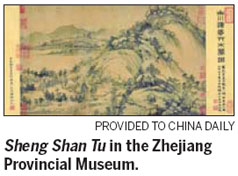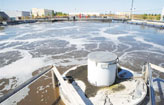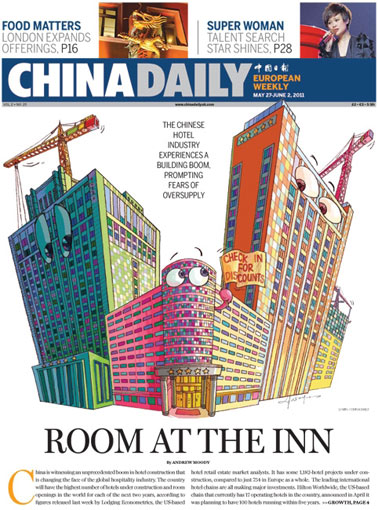Heritage
A classic tale of two halves
Updated: 2011-05-24 07:54
By Zhang Zixun (China Daily)
EDITOR's Note: Every week we look at a work of art or a cultural relic that puts the spotlight on China's heritage.
One day in 1650, a dying man gazed at a box next to his bed, forcing his eyes to remain open. When his family took out a treasure and spread it in front of him, tears rolled down the man's eyes and he said in a hoarse whisper:
"Burn..."

The treasure was Fu Chun Shan Ju Tu, or Dwelling in the Fuchun Mountains - the most representative ink-and-wash painting of Huang Gongwang (1269-1354), one of the "four great masters of the Yuan Dynasty (1271-1369)".
Based on the landscape of the Fuchun River in Zhejiang province, where Huang lived in his twilight years, Huang took three years to finish it. The 82-year-old then gave it to Taoist monk Wu Yongshi.
Dong Qichang (1555-1636), the renowned Ming connoisseur who once owned it, once described looking at it as "feeling completely satisfied".
Huang could never have imagined that nearly 300 years later someone would want to destroy his masterpiece not out of rage but out of love.
The painting's crazed fan was Wu Hongyu, a Qing Dynasty (1644-1911) collector. So enthralled of the painting was he that by burning it, he hoped the treasure could accompany him forever in the netherworld.
Luckily for the Fu Chun Shan Ju Tu, the minute the painting was thrown into fire, his nephew Wu Jiang'an rushed to save it.
But the damage had been done. The more than-6-meter-long painting scroll was torn into two.
The two pieces were given separate names and remained apart. The first and smaller piece, measuring a bit more than half a meter, was renamed Sheng Shan Tu, or The Remaining Mountains. After passing through several collectors, it is now housed in the Zhejiang Provincial Museum.
The longer piece, Wu Yong Shi Volume, journeyed more dramatically.
In 1746, the piece was acquired by the Imperial Palace. But the emperor Qianlong ascertained it to be a high-quality fake, as a year earlier he had bought a painting he believed was the authentic Wu Yong Shi Volume.
To save the Qianlong emperor, who considered himself as an exceptional connoisseur, from losing face, the real one was considered a fake until 1816. And the actual fake, which had earned 48 poems from Qianlong, was proven to be a copy by renowned Ming (1368-1644) artist Shen Zhou (1427-1509). The fake was later known as Ziming Volume.
 |
Wu Yong Shi Volume was eventually taken to Taiwan after the Kuomintang lost the War of Liberation and is now kept in the Palace Museum in Taipei.
On May 18, Art Exhibitions China and the Palace Museum in Taipei held the handover ceremony of Sheng Shan Tu - the smaller piece - in Beijing. In June and July, the two pieces will be exhibited together as one at the Palace Museum in Taipei.
After 360 years, the grand masterpiece can finally be viewed whole again.
China Daily
E-paper

Tapping into the future
Foreign companies are investing in China's water industry as many predict a growing profit margin.
Headhunters ride on growth
Commercial property rides wave
Learning from the past
Specials

Cuisine central
London's Chinatown is helping diners appreciate full palate of Chinese food

Tying the knot
Danish couple's high-end macrame export business takes off in the mountains of Yunnan.

Truly a super woman
Li Yuchun first came to prominence in 2005 as the Super Girl winner, and since then has become an international star.
